One of Hawaii’s most iconic and revered places has been closed to visitors since March 2020 but may soon reopen. A spokesperson from the National Park Service recently said it is “closer than ever” to resuming public access, marking a new chapter in Hawaii’s history.
Tucked away at the bottom of 2000-foot sea cliffs, the Kalaupapa Peninsula isolated patients of Hansen’s disease (leprosy) from their loved ones and the world. As preparations for reopening might unfold, Kalaupapa could again offer an opportunity to explore its powerful history, incredible scenery, and stories of amazing resilience. With the last “patients’” wishes and preservation efforts in mind, this could become another significant moment in Hawaii.
Kalaupapa has a complex history that embodies suffering, resilience, beauty, and reverence. Only eight former patients remain, and their stories echo through the landscape.
History and suffering at Kalaupapa.
Kalaupapa became a place of forced isolation for those diagnosed with Hansen’s disease starting in 1865. Thousands of patients endured separation, stigma, and suffering there, often spending the remainder of their lives separated from all loved ones.
Yet even with the hardship, individuals like Father Damien, canonized in 2009, later emerged as beacons of hope and compassion. His dedication, along with the efforts of other caregivers, helped transform Kalaupapa into more than just a settlement—creating a legacy of resilience, humanity, and healing that continues to inspire visitors today.
A look back: Reflections from Kalaupapa visitors.
Visitors to Kalaupapa shared with Beat of Hawaii their experiences that showcase the profound impact of this unique place:
- Carmel M recalled hiking down in 1991, describing it as “a wet, humid and sloppy hike” but ultimately “absolutely breathtaking” upon reaching the bottom.
- Debbie W mentioned how “it was such a unique and touching experience” guided by Richard Marks in the early 2000s.
- Nancy M shared a deeply personal connection: “My husband’s grandfather was born in Kalawao in 1894, and his great-grandfather was buried there years later.”
- Barb R recounted her mule ride in 1985, with guide Ike saying, “He had lived there since he was 16 because of leprosy,” and how being in Father Damien’s church was “very Spiritual.”
- Melony P spoke about her visits and described Kalaupapa as “one of the most sacred places I have ever visited,” also performing at St. Philomena’s Church.
- Ron W reflected on his strenuous hike over 18 years ago, sharing how it was “life changing,” despite being sore for days afterward.
- Patrick G appreciated learning about Kalaupapa’s history, saying his “family has a very long history on the islands and especially on Maui.”
- Roy shared that his friend Fermin’s work on Kalaupapa was “life changing” and inspired him to create a series of artworks.
- Sandra F mentioned feeling “overcome with a peaceful feeling that I will never forget” after her mule ride.
- Jane expressed how riding the mules to Kalaupapa was “one of the most moving and incredible experiences of our lifetime,” something she would do again.
The Struggle for Reopening: Although the park has remained closed for years for various reasons, some obvious and others not entirely explainable, efforts are underway to resume tours once a vendor is approved.
Kalaupapa National Historical Park is managed jointly by the National Park Service (NPS) and the Hawaii State Department of Health (DOH). While the NPS is responsible for the overall administration of the park, the Hawaii DOH still plays a significant role, especially in overseeing the support of the few remaining residents.
This dual management approach ensures that Kalaupapa’s historical significance and other aspects are preserved and respected. The NPS aims to balance access with respect. Commenters wanted Kalaupapa to reopen thoughtfully without turning it into another Hawaii tourist hotspot.
With the trail to Kalaupapa closed, access by air has been significantly reduced due to limited service. NPS is acutely aware of the situation, and reopening must be balanced to not further strain the already limited transportation resources available for Molokai residents.
NPS said, “How can we allow visitors without directly competing with locals for limited airline seats? We want to be thoughtful and sensitive in our efforts, not take away from the community.” No specific timeline has been offered thus far for when visitors might expect tours to begin again.
Preserving the Legacy: Kalaupapa’s history is preserved in the memories and stories shared by those who have lived and visited there and in its unique austere landscape. As it prepares a potential reopening, there is hope that future generations will honor this place as a site of learning, healing, and respect.
For now, the Kalaupapa Lookout on the topside of Molokai offers a spectacular and humbling view of the peninsula below. Hopefully, the closed trail from the lookout down to the settlement will be part of the reopening plans.
Feel free to comment or share your Kalaupapa experience below. We’ll keep you updated on future reopening details.
Get Breaking Hawaii Travel News
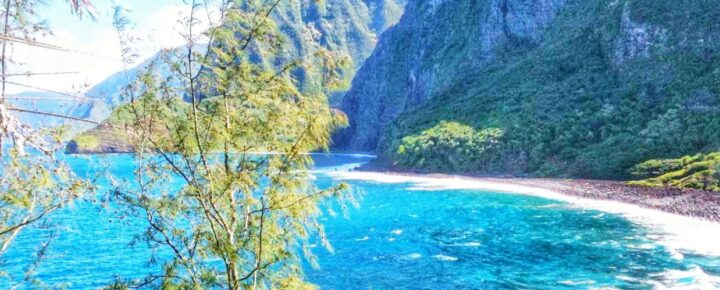

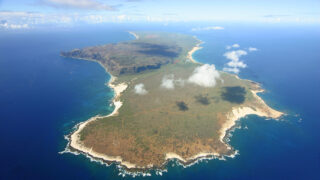
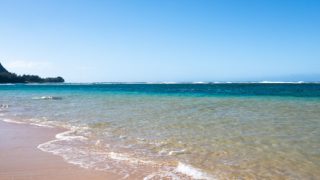
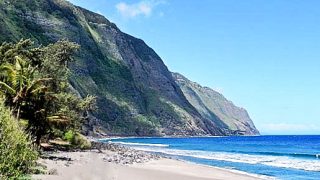

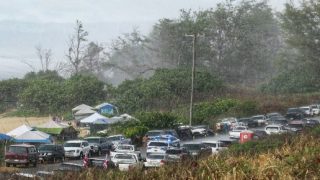
My husband, myself and two teenage daughters visited Molakai in 1982. We rode the mules down the rough trail which was scary and dangerous. When got to the bottom we were greeted by a very nice resident who had obvious effects of leprosy. There were some other visitors with us and they held back from this person. My husband went right up and shook his hand. Then the others did the same. We are so glad we had this experience and are happy that people are not being isolated like this anymore.
I thought Niihau was the forbidden island!! We’ve had the good fortune to be able to visit there. Quite a place…..
I’m a tourist, and even though it sounds breathtakingly awesome, I say open it only for the community to keep the balance. Some, but not all, outsiders will ruin it. Sounds like it is sacred ground and needs to be protected at all cost.
It was open and the tours were run and owned by the residents. It most certainly is a sacred space that the community has wanted reopened. This sounds more like government overreach to me. So glad I was able to visit before ot closed.
How long until the criminal homeless-like they’re doing on Kauai-and entitled tourists just screw the place up again?
Chris,
I’m sorry you feel that the tourists in Kauai are a detriment to the island. I’ve been there four times (hopefully 5 this summer) and fell in love with the island. The beauty of Kauai never ceases to amaze me and every time I have to leave I pray that I’ll be able to visit again.
As a kama’aina who was fortunate to experience a brief visit to kalaupapa, including kalawao, in the early 2000s, idk if a national park is best option for opening the place up to the public. Unless access is strictly controlled and limited, the beautiful and spiritual essence of kalaupapa may be ruined. Like others have mentioned, also respect for the remaining and former residents/patients, including family and descendants, and their experiences and opinions should be of paramount importance. This tragic chapter of hawaiian history is clearly demanding kid-glove handling. Although perhaps the national park status is a done deal, I would vote to keep a lower-level park status, like reserve or preserve, if it would limit access and traffic. I would not open kalaupapa to the public before requiring all visitors to be educated similar to what has been established at Hanauma Bay. And please don’t allow it to become monetized, where only the affluent are allowed access.
I agree. Limit to visitor by reservations only and educational program. I live in Joshua Tree National Park and have alot of visitors that just don’t have respect and or care of preserving our history, land and wildlife. Heartbreaking. I feel for Hawaii. Love you all.
Hawaii and the people that reside there are unique and fascinating. Remember to respect and honor them both when visiting. Keeping it a paradise depends so much on those who visit. My opinion is it is the most special place on earth.
Previosly lived on Oahu. Has gotten busier and busier through the years. There are so few places left in the islands that remain both historic and unspoiled. Kalaupapa is one such place. It should be treated with reverence and respect. This position needs to be the overwhelming stand taken when considering visitation. Visitors should be by reservation and numbers very limited. If not, i guarantee the sound of helicopters and the sight of private tour boats will permeate the environment there from dawn to dusk.
Ì took my aging mother to visit celebrating 50 years since she had bicycled the 4 major Islands in 1950. We were both filled with compassion for those who had suffered there and those who dedicated their lives to serving them.
About 10 years ago, my husband and I (we live on Oahu) took a tour of Kalaupapa. A small group of people flew from Oahu to Kalaupapa, boarded an old school bus, and had a very interesting tour. I am so glad we went. It felt like stepping back in time, and we both loved being able to learn about the history of the remarkable people who were forced to live there.
Are all of the patients/former patients/residents deceased now? I was at the lookout when I visited Molokai. Beautiful views. It’s understandable that people were afraid of catching Hansen’s disease and were afraid of it spreading. But it is so sad that the patients and their families were mistreated because of an illness and fear. I’m so glad that medical science was finally able to treat this disease.
Hi Carol.
There are eight Kalaupapa Registry patients living both at Kalaupapa and on Oahu.
Aloha.
It is my understanding that the patients were treated decades ago for Hansen’s disease. And it is no longer active in their systems. Therefore, non-communicable. Which is why there were tours available previously. The patients are patients because they are being treated for the residual effects of the disease. Please, correct me if I am wrong.
My great aunt Dorothy was a nun with Sacred Hearts and used to do some work with the residents on Molokai. She said she also helped with the effort to get Father Damien named a saint. It would be a very m memorable experience for me to visit a place she spent a great deal of time in the latter part of her life. I hope they’re able to open this area to limited visitation.
Sorry, why would you want visitors coming to a sacred place,? Once you open up to visitors you are asking for trouble . People/tourist/visitors don’t give a rats ass about where we grew up, what we had to go through to get around for food medical needs etc etc.. they will desacrate our aina like they are doing now when they visit, then go home. Speeding, partying rubbish, no respect cuz they no kea.
And the locals aren’t doing the exact same thing and worse Braah???
A Local
Visited with Sierra Club in the 70s -80s doing clearing and restorations near the church and old settlement. So rewarding, educational and the residents very appreciative of our respectful interactions . Both walked and donkeys on the trail. And once on a flight with my disabled Mom. Understandable limiting access and hopeful for respect of educating people of the history and prioritizing resident needs . Will be watching and supporting your consider efforts. Mahalo
Big island resident with relatives in your mainland flight cities. Interested. Mahalo
My grandparents (Mum’s parents) both worked at Kalaupapa Settlement. My mum was born there and sent to Maui (age 5 yo) to be with her mum’s relatives.
I have been wanting to visit Kalaupapa Settlement to see where my mum was born and grandparents worked till they left and relocated to Maui and Oahu.
Visiting Kalaupapa Settlement has been on my Bucklet List for years. Hope I’ll be able to visit while I’m still physically to travel on my own without assistance.
Aloha guys, So what are they considering? Reopening the trail? Mule rides like long ago? Or boat drop off?
Hi Debra.
We’re awaiting more details at this point. The mules are no longer there, so that seems unlikely. Please stay tuned.
Aloha.
Still got the sticker somewhere “I’d rather be riding a mule on Molokai”…
😀
I was fortunate to visit in 2015 and take a tour with a local guide who had deep connections to the history of the settlement. It was so much more than just a tour.
As someone who loves Hawaiian history, visiting Kalaupapa was a pilgrimage. Standing in St. Philomena’s Church where Father Damien once preached was incredibe. You could feel the weight of his work and the compassion that defined this place.
I visited in the early 2000s, and it was eerie and beautiful. The isolation of the settlement, surrounded by sea cliffs, made me reflect on what life must have been like for those sent here. Walking through the old buildings, I could almost feel the presence of those who had lived and died there. There’s nothing else like it.
I’ve been into Kalaupapa twice, in the 70’s. Your platform doesn’t allow me enough space to adequately recount both stories. If you would like to hear them, I look forward to hearing from you
The mule ride down to Kalaupapa was an adventure in itself, but what really moved me was meeting one of the remaining residents. Listening to their story brought the history to life in a way that books or tours never could. I’m grateful I had the opportunity to visit before it closed to the public.
Visiting Kalaupapa was one of the most humbling experiences of my life. I hiked down the trail, and as I descended, the vastness of the Pacific came into view. By the time I reached the settlement, I realized this place was more than just a historical site—it was a testament to human resilience and the strength of community.
I’ll never forget the moment I stepped onto Kalaupapa’s peninsula. The air felt different, almost sacred, as if the land itself was whispering the stories of those who lived and suffered there. The beauty of the cliffs contrasted so deeply with the heavy history—it’s an experience that stays with you long after you leave.
Fondly remember two volunteer mission work trips in 1979 and 1980 to help refurbish the Congregational Church Fellowship Hall. Beautiful and wonderful people who truly embodied the Aloha spirit. Inspirational and uplifting in every way.
Back in the day Royal Hawaiian Airlines flew from both HNL and the old Kaanapali Airport several times a day. Great memories for all.
Aloha ke akua.
In 1865, the Legislative Assembly passed, and King Kamehameha V approved the “Isolation Law” as it was known: “An Act to Prevent the Spread of Leprosy”, which set apart land to isolate people then believed capable of spreading the disease.
When I was a kid and living on O’ahu in the ’50s, we all – that’s Kanaka, Kamaʻāina, and tourists – only spoke of Molokaʻi and its “Leper colony” in hushed terms. In my experience, no one thought about going there or ever mentioned it.
And now? Calmer minds prevail, thankfully.
I come to Molokai almost every year for the past 9 years. I would love to visit
A very moving film about this from the Hawaiian’s point of view is “The Wind and the Reckoning” and I recommend it to anyone interested.
I’m not a very spiritual person, but our visit here years ago moved me in ways that I didn’t expect.
We, too, were so fortunate to have Richard Marks as our guide, and his stories and remembrances we talk about to this day.
I hope that, with the reopening to visitors, the NPS continues to protect the legacy and unique quality of this beautiful place.